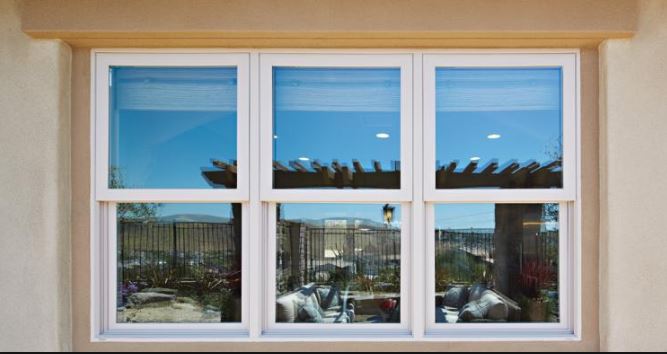Common Smart Lighting Problems and How to Fix Them
Common Smart Lighting Problems and How to Fix Them smart lighting sounds like living in the future, until your lights start acting like rebellious teenagers. But Common Smart Lighting Problems no panic needed how to Fix Them smart lighting. With a bit of smart Troubleshooting Smart Lighting, most issues are easier to fix than assembling IKEA furniture.

Lights Won’t Connect to WiFi
Nothing kills the smart vibe faster than lights refusing to join your WiFi party. If your smart bulbs can’t connect, don’t immediately assume they’re broken. A big chunk of Troubleshooting Smart Lighting issues stem from router settings.
Solution:
Many smart bulbs only support 2.4GHz WiFi, not 5GHz. Double-check if your router has separate bands, and make sure you’re on the 2.4GHz network when setting up. Also, keep the device close to the router during setup — proximity is key.
Lights Turn On or Off Randomly
Ever feel like your house is starring in a horror movie when lights flicker for no reason? Relax, it’s probably just a glitch — a common scenario when Troubleshooting Smart Lighting.
Solution:
Start by checking your automation settings. Smart homes often have schedules or routines that are easy to forget. Look for any rogue automations that might be triggering these surprise moments. Firmware updates can also squash these bugs, so keep your apps and devices updated.
Lights Won’t Respond to Voice Commands
There’s nothing more awkward than shouting at your lamp and getting ghosted. If voice assistants like Alexa or Google Assistant aren’t controlling your lights, the problem could be a simple connection hiccup.
Solution:
First, ensure the light is still online in your smart home app. If it’s not, reconnect or re-add the device. Sometimes re-linking your smart home account to your voice assistant can work wonders. Remember, patience is the real MVP when Troubleshooting Smart Lighting for voice control issues.
Lights Not Dimming Correctly
Trying to set the perfect movie mood and your lights are stuck at “blindingly bright”? Ouch. Dimming issues often pop up when bulbs and switches aren’t fully compatible.
Solution:
Make sure your smart bulbs are connected to standard on/off switches rather than dimmer switches — unless the dimmer is also smart. Manual dimmers can mess up voltage levels, confusing your bulbs. Swapping the switch often fixes this drama.
App Can’t Find New Devices
You just bought fancy new smart bulbs, but your app looks at them like strangers. Common in Troubleshooting Smart Lighting, especially if setup instructions are skipped or misunderstood.
Solution:
Reset the bulbs to factory settings. Usually, this involves switching the bulb on and off several times in a specific pattern (check the manual — seriously). Make sure Bluetooth or location permissions are enabled on your smartphone if required.
Lights Flicker or Buzz
Flickering or buzzing smart lights can turn your cozy evening into a rave you didn’t ask for. Fortunately, this is another situation where good old Troubleshooting Smart Lighting steps in to save the day.
Solution:
First, verify your wiring and ensure that your bulbs are compatible with the fixtures. Older electrical systems might struggle with new smart tech. If the problem persists, consider using a smart switch designed to work with LED lights specifically.
Scenes or Automations Don’t Trigger
You set up the perfect “Good Morning” scene, but it’s 9 AM and you’re still stuck in the dark. Automation fails are one of the trickiest parts of Troubleshooting Smart Lighting, but they’re fixable with a few careful checks.
Solution:
Double-check if the trigger conditions for the scene are met. Some scenes rely on time, others on location, and if your phone’s GPS is off, your smart home could be clueless about your whereabouts. Also, ensure your hub or main app isn’t experiencing downtime.
Devices Keep Dropping Offline
When your smart lights play hide and seek with your network, frustration hits fast. Offline devices are a textbook example in any guide on Troubleshooting Smart Lighting.
Solution:
Optimize your WiFi network. Place routers or mesh points strategically, especially if you have a larger home. Smart devices crave strong, stable signals. If possible, assign a static IP address to your bulbs to make them easier for the network to “remember.”
Overheating Issues
Smart bulbs getting hotter than your phone during an intense gaming session? Yup, overheating happens — and it’s not just bad for the bulb, it’s bad for your electric bill too.
Solution:
Use smart bulbs in open fixtures where heat can dissipate. Overcrowding bulbs in tight spaces will cook them over time. If overheating persists, it might be a manufacturing fault — don’t hesitate to ask for a warranty replacement.
Difficulty Integrating Different Brands
Mixing brands sounds cool until they start fighting like cats and dogs. If your Philips Hue, LIFX, and random budget brand don’t sync well, you’re not alone.
Solution:
Look into platforms like Apple HomeKit, Amazon Alexa, or Google Home that act like “universal translators.” They can unify devices under one ecosystem. Just make sure the devices support the same smart home protocols like Zigbee, Z-Wave, or WiFi.
Final Thoughts
Smart lighting brings magic to modern living — when it works. When it doesn’t, effective Troubleshooting Smart Lighting turns chaos back into calm. Whether it’s flickering bulbs, rebellious automations, or WiFi tantrums, the key is to stay chill, methodical, and ready to dive into settings and updates.
Fixing smart lights isn’t rocket science — but it sure feels satisfying once the lights finally obey you like the tech wizard you are.





